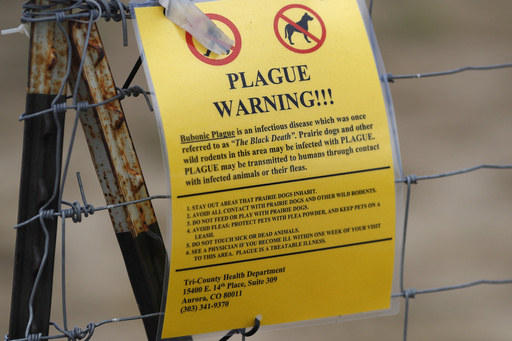FLAGSTAFF, Ariz.
A northern Arizona resident has died from pneumonic plague. Health officials say it’s the first recorded death in the area from pneumonic plague since 2007. Plague is rare in humans with about seven cases reported annually in the U.S., mostly in western states. It’s typically spread by infected fleas or contact with bodily fluids of sick animals. Pneumonic plague infects the lungs and is the deadliest and most contagious form. Plague killed millions of people in 14th century Europe but can easily be treated with antibiotics.
FLAGSTAFF, Ariz. (AP) — A resident of northern Arizona has died from pneumonic plague, health officials said Friday.
Plague is rare to humans, with on average about seven cases reported annually in the U.S., most of them in the western states, according to federal health officials.
The death in Coconino County, which includes Flagstaff, was the first recorded death from pneumonic plague since 2007, local officials said. Further details including the identify of the victim were not released.
Plague is a bacterial infection known for killing tens of millions in 14th century Europe. Today, it’s easily treated with antibiotics.
The bubonic plague is the most common form of the bacterial infection, which spreads naturally among rodents like prairie dogs and rats.
There are two other forms: septicemic plague that spreads through the whole body, and pneumonic plague that infects the lungs.
Pneumonic plague is the most deadly and easiest to spread.
The bacteria is transmitted through the bites of infected fleas that can spread it between rodents, pets and humans.
People can also get plague through touching infected bodily fluids. Health experts recommend taking extra care when handling dead or sick animals.
Most cases happen in rural areas of northern New Mexico, northern Arizona, southern Colorado, California, southern Oregon and far western Nevada, according to the Centers for Disease Control and Prevention.


